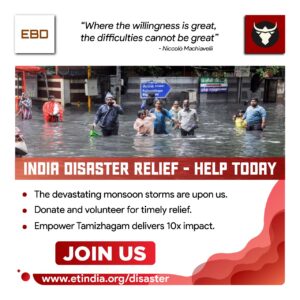What Price the Environment?

A very compelling article appropriately titled Wealth of Nations in Seed Magazine brings up some essential issues. Indeed, how do you balance the environmental common good with the more mundane matters of economic survival and growth.
Excerpt in italics below:
Ecosystem services have passed beneath the financial radar in part because they are accessible to almost anyone—in economic parlance, they are non-excludable. Also, demand does not affect supply, since one person’s enjoyment of the services doesn’t diminish that of the next user, a characteristic economists dub non-rival. These two basic properties place things like clean water and carbon sequestration in the economic category of public goods. And the problem with these goods is that since everyone can enjoy them free of cost, no one has an individual incentive to provide them. Their value goes officially unrecognized, and their supply is not maintained.
Public goods are not a new idea; many of them, like the atmosphere, the geostationary orbit, and the electromagnetic spectrum, existed long before humans, notes public-goods scholar Inge Kaul, former director of the United Nations Development Program. The paradox of provisioning such goods is not a new idea either, even to non-economists.
Today, however, acknowledging the worth of such goods is more pressing than ever. The increasing connectedness of the world’s ecosystems—largely through human mobility, international commerce, and accumulated environmental degradation—means that the fallout from the abuse of public goods shakes communities from the Maldives to the Andes. National governments have traditionally managed the provisioning of goods like public health and clean air, but in this connected world, the goods that each nation desires, or doesn’t, in the case of pollution, are unattainable without incorporating the interests of other states. As Kaul puts it, “A growing number of national public goods have gone global.”
In developing nations, the challenge is at both the macro and micro levels. At a macro level, the local government or industry may not see the point of spending money and resources to address pollution issues. Unless they reach a critical stage and negative media attention. At a micro level there is the individual factory worker. A case in point is an Indian town that specializes in knitwear manufacturing for domestic and global markets. They suffer the biggest water and environmental pollution issues. But the poor people living in that area are dependent on textile manufacturing jobs for their livelihood, so health issues for them and their children are a lower priority. Their other choice is a nicer environment but starvation.
Especially in the consistently unstable financial environment in developing nations, economic prosperity remains the only priority and yardstick. And developed ones too are similarly afflicted in these days.
Even if there are any environmental regulations of note, they are typically circumvented by companies. It then falls to well-meaning government officials and non-profit organizations to step in. Regrettably, they typically work at cross-purposes with each other at best, and in an antagonistic manner at worst..
Success in this setting is more a matter of the relationships and being able to sustain consistency in environmental quality. Local champions and pockets of excellence serve the needs to a point.
A scalable and financially sustainable model can only be possible with a private-public-NGO partnership approach. This has been the strategy for several of our initiatives in India and other global Bottom-of-the-Pyramid segments. Cobbling together the global and local coalitions while navigating the power structures and motivations – is a long and arduous journey.
But the results are absolutely worth it!
– By R Sampath. All rights reserved.
More on the original article at http://seedmagazine.com/content/article/wealth_of_nations/
economic prosperity being the top priority among developing nations. And developed ones these days.
e.g. the town of Tiruppur as the t-shirt and knitwear manufacturing capital of India has the biggest water and environmental pollution issues. But the poor people living in that area are dependent on textile manuf jobs for their livelihood, so health issues for them and their children are a lower priority. The other choice is nicer environment but starvation.
The companies typically pay off the local regulators to minimize their cost of doing anything for water treatment, etc. The govt and NGOs have to step in to get anything done.


